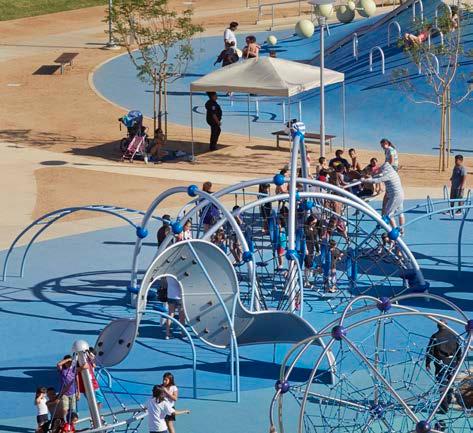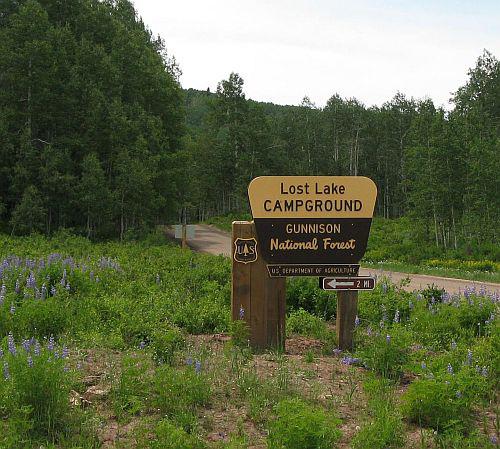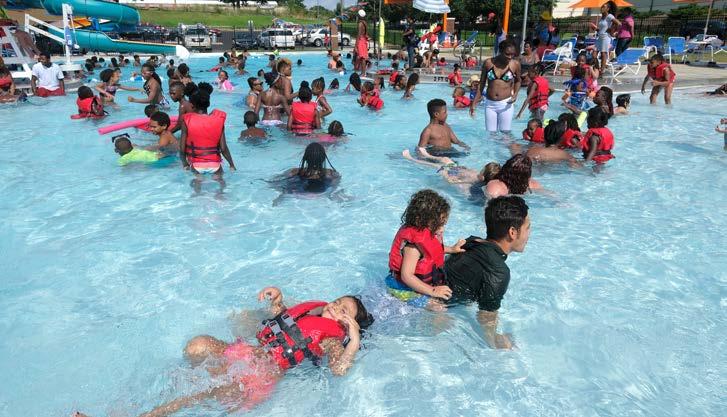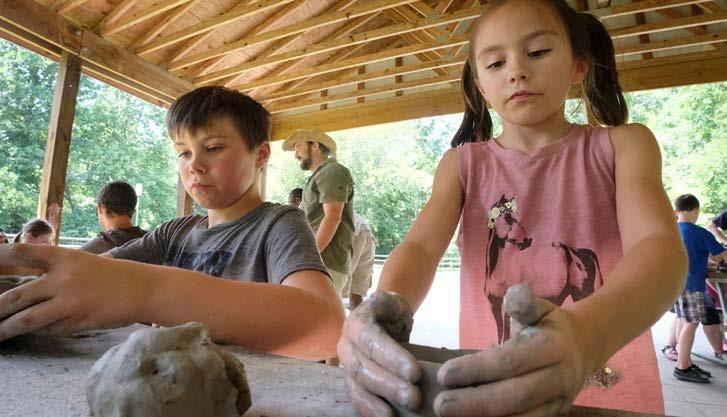
9 minute read
Goal #9 Funding
Recognize and invest in parks and recreation as a valuable and necessary County service.
9.1 Develop and regularly update metrics to communicate the value of Mecklenburg Park & Rec service and amenities— across County departments and to the public.
Advertisement
As a CAPRA accredited organization, Mecklenburg Park & Rec has developed a healthy system of performance measures and metrics. The department is able to track progress with the Strategic Business Plan in concrete and measurable ways. The stories of these successes and challenges are vital to communicate to the public. It is recommended that Mecklenburg Park & Rec develop an online dashboard to easily and transparently report such progress externally. Dashboards in similar communities have been used to track customer experience, infrastructure development and preservation, organizational excellence, and staff performance. Transparent reporting of performance results, both successes and current challenges, allows the community to actively participate in government. While it is important to measure Mecklenburg Park & Rec against its own goals, it is also helpful to situate metrics in a larger context. As a reminder, the following list includes the peer agencies analyzed and reviewed for a comparison of both funding and staffing needs. While this list is not exhaustive, it is recommended that Mecklenburg Park & Rec continue to compare itself to these same agencies for consistency: • Austin, TX • Columbus, OH • Dallas, TX • Gwinnett County, GA • Hillsborough County, FL • Jacksonville, FL • Louisville Metro, KY • Palm Beach County, FL • Salt Lake County, UT • Wake County, NC • Montgomery County, MD
9.1 Key Actions
Develop an online dashboard to easily and transparently report CAPRA performance progress with the public.
9.2 Capitalize on funding related partnerships with County, private, or non-profit institutions that reinforce Mecklenburg Park & Rec’s role in a broader County-wide network of open spaces.
Mecklenburg County boasts a high number of mission-aligned institutions, ranging from schools to libraries, nonprofit organizations, education and recreation providers, and local businesses. Developing partnerships with these groups has multi-faceted benefits—in particular, increasing access to resources. Partnerships with a broad base of organizations could leverage funding sources to expand programming or improve facilities without impacting Mecklenburg Park and Rec budget. For example, MCCSG are available to 501c3 non-profits. As of 2020, Camino Community Development received funding for a health center serving low income, uninsured Hispanic and Latinx populations, as well as Special Olympics North Carolina. Organizations such as these seem natural partners. Corporate and small business partners can also provide strategic investment. In the past, Coca-Cola Bottling Co. donated $105,000 to Mecklenburg Park & Rec through the Partners for Parks non-profit. Money was used to repave the top of six basketball courts and add colorful paint. Targeting these charitable contributions in under-resourced communities will aid in providing equitable access. Mecklenburg County’s Minority, Women and Small Business Enterprises Program, Charlotte Business INClusion, Small Business Administration, and North Carolina Office of Historically Underused Businesses are also valuable partners. Offering park and recreation space to host small business pop-ups, hold outdoor convenings, or partner with financial sponsors will be mutually beneficial.
9.2 Key Actions
Explore corporate sponsorships for new investment and reinvestment projects. Work with business conveners, like Center City Partners, to advertise rentable park and recreation space to host small business pop-ups or hold outdoor convenings. Build relationships with partners who have diverse access to resources (grants, corporate sponsorships, health programs).
Case Study: Successful Partnerships
San Diego, CA
San Diego County’s new waterfront park was funded using certificates of participation (a taxexempt lease-financing agreement that is sold to investors as securities resembling bonds) and Balboa Park, one of the region’s most iconic parks, is run by both the city and a combination of many privately run organizations.

U.S. Forest Service
Since 2002, the U.S. Forest Service has successfully partnered with a for-profit vendor (Recreation Resource Management) to manage just over half of their campgrounds (150 locations in eleven states). Although controversial to some, it has provided revenue to the Forest Service and has kept campgrounds open and maintained for the public.

Maricopa County, AZ
Maricopa County’s department of parks and recreation created several private partnerships that enabled them to provide concession offerings, recreation facilities, and services that they could not have provided otherwise. They look to the private providers to manage services like golf courses, water parks, and paintball facilities, while investing in parks through capital development. The Central Arizona Conservation Alliance (CAZCA) contribute approximately 20% to Maricopa’s overall park system operation budget. CAZCA is made of a consortium of partners ranging from museums to garden clubs, conservancies to the Urban Land Institute. These partners handle approximately 24% of the agency’s annual visitation of 2.1 million visitors.
9.3 Develop a cost recovery model that enables Mecklenburg Park & Rec to respond to both temporary and permanent needs.
The County has steadily increased investments in Mecklenburg Park & Rec between 2011 and 2018, by increasing its staff by about 30% and its budget by $16 million. Even with continued investment by County leadership, Mecklenburg Park & Rec is still working to catch up with the needs of a growing and diversifying population, environmental challenges caused by increased development pressures, and competing to attract and retain talent. The long term effects of the COVID-19 pandemic may only make funding for Mecklenburg Park & Rec more difficult to achieve through traditional methods. In order to respond to changing demands and increase its ability to fund creative projects, Mecklenburg Park & Rec must act more proactively to better align its own financial goals with the County’s high level aspirations and chart an achievable path forward. In 2019, the Portland Parks and Recreation department met with the City Council to align community expectations with funding realities and set expectations for a sustainable long-term investment plan. Portland Parks and Recreation modeled three scenarios for the future of the system over the next fifteen years and described the funding needed to deliver each vision, as well as the trade-offs associated with each: • Scenario 1: Decline - Funding would remain static and service levels would decline.
• Scenario 2: Maintain - New funding would be acquired to maintain the current level of service.
• Scenario 3: Fulfill - New funding is acquired to meet aspirational service standards. Scenario 1 was not supported, so Portland Parks and Recreation organized an Alternative Funding Task Force, which worked with national and local experts to identify funding options that could achieve either the Maintain or Fulfill scenario. While Scenario 3 was the goal, there was no consensus about how to finance such an ambitious game plan. They explored a range of solutions, identifying those that were politically feasible from bonds to a special district to a food and beverage tax, as well as noting those that were not recommended.
While deliberations are still ongoing, the process of decision making and creative brainstorming was notable. This kind of conversation with County leadership would not only help Mecklenburg Park & Rec identify additional sources of revenue, but enable creative problemsolving with County leadership.
Cost Recovery Methods
Currently Mecklenburg Park & Rec does not balance program and operational costs with generated revenue from fees, programs, camps, and services. In order to develop and maintain a financially sustainable system, Mecklenburg Park & Rec should evaluate the current budget against the existing fee model and policies to track expenses and revenue generation and to more sustainably recover costs from programs. Recommendation Assessment: Fee-based programs accounted for 50.5% of the total, while free programs were 49.5%. This equalization of fee-based versus non-fee based programming is to be commended. This equalization of fee- versus non-fee based programming can, in theory, reduce the incidence of price as a barrier to participation. From a fiscal perspective, however, such a large percentage of free programs can be financially difficult to sustain and assume inability to pay. Mecklenburg Park & Rec should implement more fee-based programming to encourage buy-in, enhance perceived value, and generate non-tax revenue.

3.22 Summer programming at Double Oaks Pool. 3.23 Fee-based environmental education program at Reedy Creek Nature Preserve.

Cost Recovery Report: Mecklenburg Park & Rec’s fees are currently identified by direct cost and a 12% overhead calculation. Proposed fees are developed by staff using an Excel based program pricing tool. And while the tool provided a solid foundation for setting the price for programs and services, additional factors should be considered when developing pricing. The following factors are currently considered by Mecklenburg Park & Rec staff in developing proposed fees: • Cost to offer the program (limited direct costs only) • History of fees charged • Perceived ability and willingness to pay • Number of participants per class/activity • Affordability for target audience • Ability to attract participants It is recommended that a more business minded approach to pricing be taken by Mecklenburg Park & Rec. Mecklenburg Park & Rec should establish a model for setting fees that encourages realistic cost of service based fees for those who have the ability to pay, while allowing for expanded subsidy (discounting) for those who have demonstrated financial need. Creating and implementing discount policies (senior, multiple family, financial aid assistance) are important components of effective operationalizing of a cost recovery process. Mecklenburg Park & Rec currently groups programs and services by division and by recreation facility. However, to better define cost recovery it is recommended that Mecklenburg Park & Rec also create categories of programs and services that are alike, regardless of the affiliation with a specific recreation facility, program type, or demographic. This method groups services according to level or likeness of activity (introductory, intermediate, etc., community events, merchandise for resale) and also allows for differentiation of value to the community.
In many agencies, activities are subsidized to greater and lesser levels based on priorities directly or indirectly identified by decision makers. For example, activities for youth, teens, and seniors have been traditionally subsidized to a greater level than adult and active adult activities. Services sympathetic to low-income populations have traditionally been subsidized to a greater level than those targeted to middle/ higher income people. After creating new categories based on activity similarity and establishing a cost of service for each one of the programs offered, a cost recovery model should be developed. Cost recovery plan to increase revenue but make cost assistance readily available to those who need it to participate. Establishing and implementing a cost recovery policy into routine fiscal exercises provides Mecklenburg Park & Rec with a multitude of opportunities to improve service delivery. More importantly, it aligns fees with the mission and priorities of the community.










